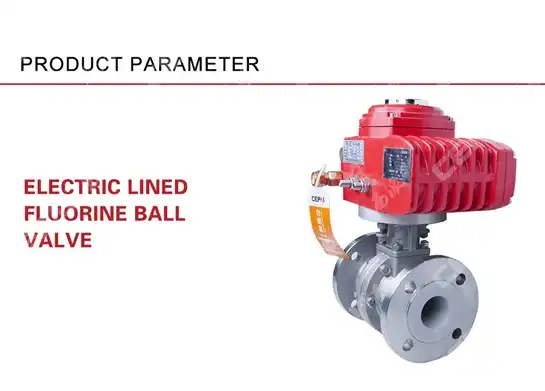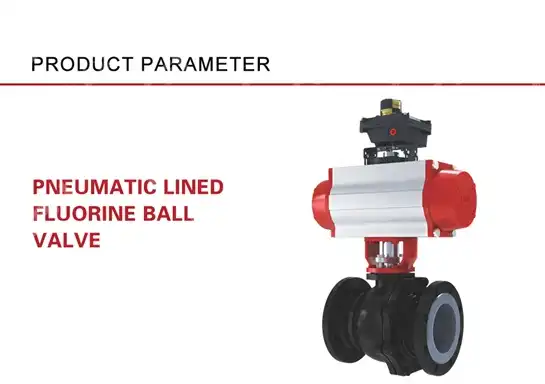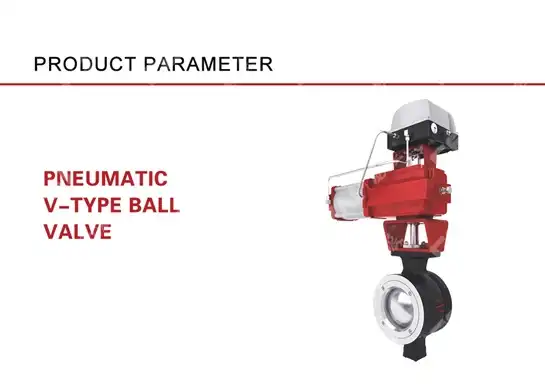Globe Valve vs. Ball Valve: Which is Better for Electric Flow Control
When your production line experiences pressure fluctuations, temperature inconsistencies, or flow irregularities, choosing between a globe valve and a Ball Valve for electric flow control becomes critical. The wrong selection can lead to costly downtime, energy waste, and compromised system efficiency. Understanding which valve technology delivers optimal performance for your specific application determines whether you achieve precise flow modulation or face operational challenges. This comprehensive analysis examines both valve types to help engineers and procurement specialists make informed decisions that enhance system reliability, reduce maintenance costs, and maximize process control accuracy in industrial automation environments.
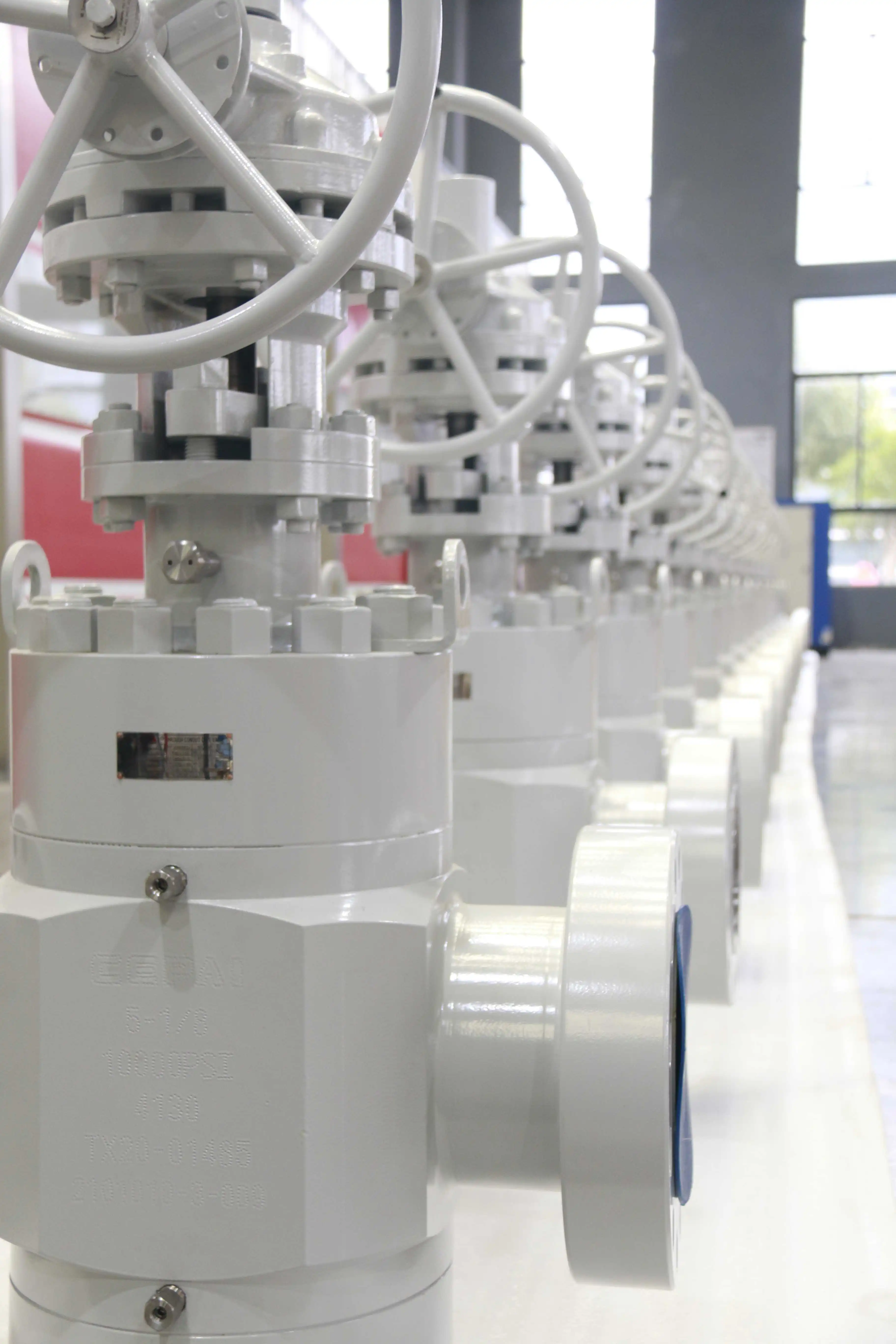
Understanding Ball Valve Technology for Flow Control Applications
Ball valves represent a quarter-turn valve design utilizing a spherical closure element with a bore through its center to regulate fluid passage. When the bore aligns with the pipeline, flow proceeds unobstructed; rotating the ball ninety degrees positions the solid portion against the flow path, creating a complete shutoff. This fundamental operating principle makes Ball Valve technology particularly advantageous for applications requiring rapid actuation, minimal pressure drop, and reliable sealing performance across diverse industrial sectors including petrochemical processing, power generation, and water treatment systems. The Ball Valve mechanism delivers exceptional sealing capabilities through its dual-seat configuration, where elastomeric or metal seats create compression against the ball surface in the closed position. Modern electric actuators enhance Ball Valve functionality by enabling remote operation, precise positioning control, and integration with automated process control systems. Industries demanding fail-safe operation benefit from electrically actuated Ball Valve assemblies that provide emergency shutdown capabilities, position feedback signals, and torque monitoring to prevent equipment damage. CEPAI Group has developed advanced Ball Valve solutions with SIL certification, ensuring functional safety compliance for critical process applications where system integrity directly impacts operational safety and environmental protection.
-
Key Advantages of Electric Ball Valve Systems
Electric Ball Valve configurations offer significant operational benefits in automated industrial environments. The quarter-turn actuation requires minimal torque compared to multi-turn valve designs, reducing actuator size, power consumption, and installation costs. Ball Valve construction features fewer moving components than globe valves, translating to enhanced reliability, extended service intervals, and reduced maintenance expenditures throughout the valve lifecycle. The streamlined flow path through Ball Valve assemblies minimizes turbulence and pressure loss, optimizing energy efficiency in pumping systems and fluid distribution networks. CEPAI Group manufactures high-quality Ball Valve products engineered for demanding electric flow control applications across oil and gas, chemical processing, and power generation industries. Our Ball Valve portfolio includes floating ball designs for moderate pressure applications and trunnion-mounted configurations for high-pressure services exceeding 1500 PSI. Each Ball Valve undergoes rigorous testing protocols including pressure testing, seat leakage verification, and actuator performance validation in our CNAS-accredited laboratory facilities. With API 6D, API 6A, and CE certifications, CEPAI Ball Valve products meet international quality standards recognized by major engineering contractors and end users worldwide.
-
Ball Valve Limitations in Precision Control Applications
Despite numerous advantages, Ball Valve technology presents certain limitations when applications demand fine flow modulation. Standard Ball Valve designs provide either fully open or fully closed positions, making them less suitable for throttling service where intermediate flow rates must be maintained continuously. While V-port Ball Valve modifications improve control characteristics by introducing characterized flow paths, these designs still cannot match the precision achievable with globe valve technology in applications requiring tight flow regulation, such as temperature control loops, pressure reduction stations, and chemical dosing systems. The rapid quarter-turn operation of Ball Valve assemblies can generate hydraulic shock in liquid systems, particularly when electrically actuated units close quickly without deceleration controls. This water hammer phenomenon potentially damages piping, fittings, and connected equipment while creating operational noise and vibration concerns. Ball Valve seats may experience accelerated wear in applications involving abrasive particles, high-velocity flows, or thermal cycling that causes differential expansion between ball and seat materials. Engineers evaluating Ball Valve suitability must consider these operational constraints alongside application-specific requirements to determine optimal valve selection for each service condition.
Globe Valve Design and Performance Characteristics
Globe valves employ a linear motion stem connected to a disc or plug element that moves perpendicular to the seat plane, creating a variable flow restriction based on disc position relative to the seat opening. This fundamental design enables precise flow modulation across the valve's operating range, making globe valves the preferred choice for applications demanding accurate flow control, pressure reduction, or level regulation. The tortuous flow path through globe valve bodies creates higher pressure drops compared to Ball Valve designs, but this characteristic proves advantageous in pressure-reducing services where energy dissipation prevents downstream equipment damage and system instability. Modern electric globe valve actuators provide continuous positioning capability with excellent repeatability and resolution, enabling sophisticated control strategies including split-range operation, cascade loops, and feed-forward compensation. The linear relationship between stem position and flow rate in characterized globe valves simplifies control algorithm development and enhances system response to process disturbances. Globe valve seats can be easily replaced without removing the valve body from the pipeline, reducing maintenance downtime and lifecycle costs in services requiring frequent trim replacement due to erosion, corrosion, or deposit accumulation. CEPAI Group's regulating valve products incorporate advanced trim designs that extend service life while maintaining tight shutoff capabilities throughout extended operating periods.
-
When Globe Valves Excel Over Ball Valve Solutions?
Globe valves demonstrate superior performance in applications requiring continuous throttling service, where the valve operates at intermediate positions for extended periods. The disc geometry and characterized flow paths available in globe valve designs enable linear, equal percentage, or quick-opening flow characteristics tailored to specific process requirements. This versatility allows engineers to optimize control loop performance, minimize process variability, and improve product quality in applications including reactor temperature control, distillation column reflux regulation, and boiler feedwater modulation. High-pressure drop applications benefit from globe valve technology because the tortuous flow path naturally dissipates energy, reducing cavitation risk and minimizing downstream pipe erosion in liquid services. Globe valves handle frequent cycling better than Ball Valve assemblies because the seating mechanism distributes wear across a larger surface area rather than concentrating contact stresses on elastomeric or metal seats. Applications involving superheated steam, high-temperature thermal fluids, or cryogenic liquids often specify globe valves because the bonnet designs accommodate thermal expansion while maintaining stem seal integrity across wide temperature excursions.
-
Operational Considerations for Electric Globe Valve Applications
Electric globe valve installations require careful attention to actuator sizing because the linear motion design demands higher thrust forces compared to quarter-turn Ball Valve actuators, particularly in larger valve sizes or high-pressure applications. The multi-turn operation increases actuation time, which may limit globe valve suitability in applications requiring rapid response to process upsets or emergency shutdown scenarios. Globe valve bodies typically weigh more than equivalent Ball Valve assemblies due to the heavier casting sections required to accommodate the perpendicular flow path and bonnet connection, impacting installation costs, pipe support requirements, and maintenance handling procedures. The pressure drop inherent in globe valve designs increases pumping energy consumption compared to Ball Valve installations, potentially offsetting operational savings achieved through enhanced control precision. Engineers must evaluate total cost of ownership including energy costs, maintenance intervals, and control performance benefits when comparing globe valves against Ball Valve alternatives. CEPAI Group provides comprehensive technical support to help customers optimize valve selection based on application-specific parameters including flow rates, pressure conditions, temperature ranges, and control accuracy requirements, ensuring optimal valve performance throughout the anticipated service life.

Comparing Electric Actuation Performance
Electric actuators transform both Ball Valve and globe valve designs into automated control elements suitable for integration with distributed control systems, programmable logic controllers, and supervisory control platforms. Actuator selection significantly impacts overall valve assembly performance, reliability, and installation costs regardless of valve type chosen. Ball Valve actuators typically require less torque and smaller mounting footprints compared to globe valve thrust units, simplifying panel design and reducing actuator procurement costs in applications where both valve types could satisfy process requirements. Modern electric actuators incorporate advanced features including position transmitters, torque sensors, local control interfaces, and diagnostic capabilities that enhance valve assembly functionality. These intelligent actuator platforms enable predictive maintenance strategies by monitoring operating parameters including cycle counts, running time, torque profiles, and temperature conditions that indicate developing mechanical problems before catastrophic failures occur. CEPAI Group collaborates with leading actuator manufacturers to provide integrated valve and actuator assemblies tested as complete units, ensuring compatibility, optimizing performance, and simplifying installation procedures while providing single-source warranty coverage for the entire control valve assembly.
-
Control Precision and Response Time Considerations
Control precision requirements significantly influence valve selection decisions between Ball Valve and globe valve technologies. Applications demanding resolution better than five percent of full-scale flow typically require globe valve designs with characterized trims and high-resolution electric actuators capable of maintaining stable positioning under varying process conditions. Ball Valve assemblies, even with V-port modifications, generally provide coarser control resolution suitable for applications accepting ten to twenty percent dead band or requiring primarily on-off service with occasional intermediate positioning. Response time specifications also impact valve technology selection. Ball Valve quarter-turn operation enables complete stroke completion in seconds, making these designs ideal for applications requiring rapid isolation, emergency shutdown, or batch process sequencing where fast actuation prevents product contamination or equipment damage. Globe valve multi-turn operation extends stroke times proportionally to valve size and actuator speed, potentially requiring thirty to sixty seconds for complete travel in larger assemblies. Engineers must balance response time requirements against control precision needs when evaluating competing valve technologies for specific applications. CEPAI Group's technical team assists customers in analyzing dynamic response requirements and recommending optimal valve and actuator combinations that satisfy both control performance and safety system specifications.
Maintenance Requirements and Lifecycle Costs
Maintenance considerations significantly impact total ownership costs across valve operational lifecycles. Ball Valve assemblies generally require less frequent maintenance than globe valves due to simpler mechanical designs with fewer wearing components. The rotating ball experiences minimal friction during operation, while the seat contact occurs only during final closure, reducing wear rates compared to globe valve discs that slide against seats throughout throttling service. However, Ball Valve seat replacement typically requires valve removal from the pipeline and complete disassembly, increasing maintenance downtime and labor costs when seal repairs become necessary. Globe valve designs facilitate field maintenance because bonnets can be removed while the valve body remains installed, enabling disc and seat replacement without interrupting adjacent piping or equipment. This serviceability advantage reduces maintenance costs in applications requiring frequent trim changes due to erosive service, corrosive environments, or process chemistry modifications. CEPAI Group manufactures both Ball Valve and regulating valve products with maintenance-friendly features including bolted bonnets, standardized trim components, and readily available spare parts that minimize downtime and extend equipment service life while reducing total cost of ownership across diverse industrial applications.
-
Reliability Factors Affecting Valve Performance
Valve reliability depends on multiple factors including design quality, material selection, manufacturing precision, and application appropriateness. Ball Valve assemblies demonstrate exceptional reliability in clean fluid services where the spherical sealing element maintains smooth operation without particulate interference. Applications involving suspended solids, fibrous materials, or polymerizing compounds may experience Ball Valve seat damage or ball surface scoring that compromises sealing performance and requires premature maintenance interventions. Globe valves tolerate debris-laden services better because the flow path allows particles to pass through without lodging between critical sealing surfaces. Temperature extremes challenge both valve types differently. Ball Valve assemblies rely on seat materials that maintain elastic properties across operating temperature ranges, limiting maximum service temperatures unless expensive metal-seated designs are specified. Globe valves accommodate higher temperatures through bonnet extensions, cooling fins, and thermal insulation that protect stem packing and actuator components from process heat. CEPAI Group engineers Ball Valve and globe valve products for reliable operation across temperature ranges from cryogenic conditions below negative 200 degrees Celsius to high-temperature services exceeding 500 degrees Celsius, utilizing advanced materials, specialized coatings, and proven design configurations that ensure long-term reliability in demanding industrial environments.
Conclusion
Selecting between Ball Valve and globe valve technologies for electric flow control applications requires careful evaluation of control precision requirements, response time specifications, maintenance considerations, and total lifecycle costs. Globe valves excel in applications demanding continuous throttling with fine flow modulation, while Ball Valve assemblies provide superior performance for rapid on-off service with minimal pressure drop. Understanding these fundamental differences enables engineers to optimize valve selection, enhance system performance, and minimize operational costs across diverse industrial processes requiring reliable automated flow control solutions.
Cooperate with CEPAI Group Co., LTD.
Partner with CEPAI Group for premium Ball Valve solutions backed by over fifteen years of specialized valve manufacturing expertise. As a China Ball Valve manufacturer and China Ball Valve supplier, we provide High Quality Ball Valve products certified to API 6A, API 6D, and SIL standards. Our intelligent manufacturing capabilities ensure competitive Ball Valve price points while maintaining exceptional quality. Whether you need a China Ball Valve factory for custom designs or Ball Valve for sale from existing inventory, CEPAI delivers comprehensive solutions from our 56,000-square-meter facility featuring Asia Pacific's longest high-precision production line. Contact our technical team at cepai@cepai.com for expert valve selection guidance, customized quotations, and fast delivery. As your trusted China Ball Valve wholesale partner, we provide complete pre-sales consultation, installation support, and lifetime maintenance services. Request your quote today to experience CEPAI's commitment to quality, innovation, and customer success in fluid control technology.
References
1. Hutchison, J.W. (2010). ISA Handbook of Control Valves, Second Edition. Research Triangle Park: International Society of Automation.
2. Skousen, Philip L. (2011). Valve Handbook, Third Edition. New York: McGraw-Hill Professional.
3. Emerson Process Management (2005). Control Valve Handbook, Fourth Edition. McKinney: Fisher Controls International LLC.
4. Zappe, R.W. (2004). Valve Selection Handbook: Engineering Fundamentals for Selecting the Right Valve Design for Every Industrial Flow Application, Fifth Edition. Houston: Gulf Publishing Company.

Get professional pre-sales technical consultation and valve selection services, customized solution services.
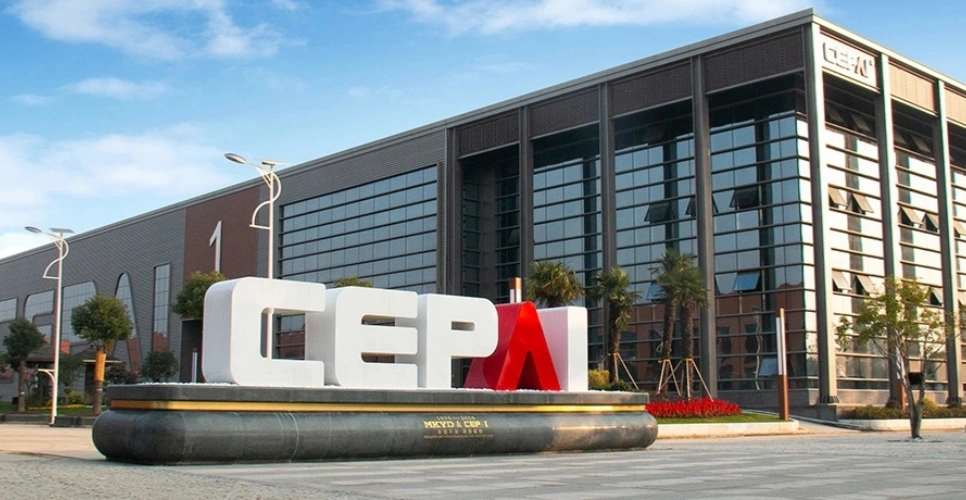
About CEPAI
